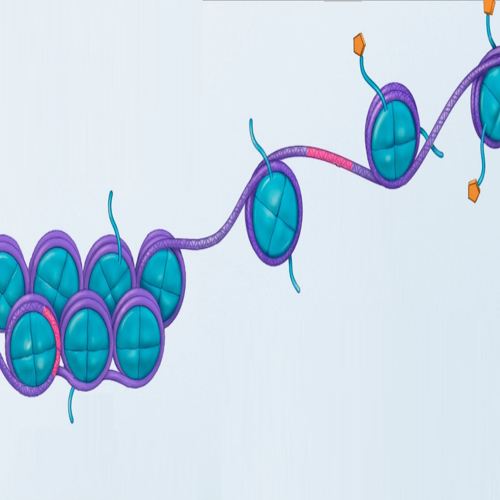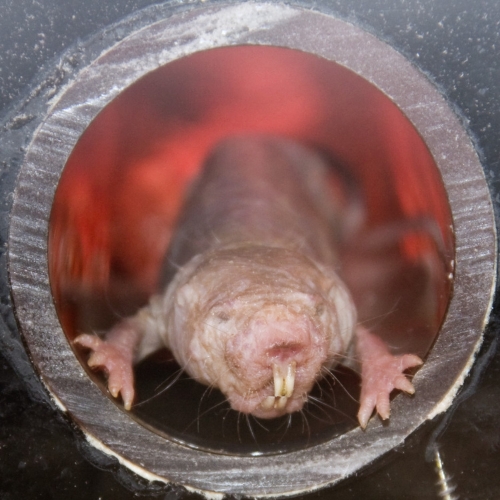Why do some mammals live for only a few years, while others thrive for decades or even centuries? Lifespan variability among mammals has intrigued scientists for centuries. Traditional theories once attributed these differences to factors like metabolic rate or body size, yet these explanations proved too simplistic as exceptions and new data emerged. With the advancement of molecular biology, researchers have begun investigating biomarkers of ageing, such as DNA methylation, to uncover the true drivers behind lifespan differences.
DNA methylation, a process where methyl groups are added to DNA, affects gene expression and plays a critical role in ageing. This study, led by researchers affiliated with the Mammalian Methylation Consortium, provides a comprehensive framework connecting methylation dynamics to maximum lifespan across diverse mammalian species. Their findings offer valuable insights that challenge traditional ideas and highlight a fundamental link between DNA changes and longevity.
Role of DNA Methylation in Ageing
DNA methylation serves as a vital biomarker of ageing, often associated with the regulation of gene expression. Methylation occurs primarily at CpG sites—areas in the genome where cytosine and guanine are linked by a phosphate backbone. With age, the level of DNA methylation fluctuates, affecting how genes are expressed over time.
The study focuses on a concept called the Average Rate of Change in Methylation (AROCM), which quantifies how rapidly methylation levels change with age. This rate of change varies widely among species and provides clues about their ageing processes. The authors aimed to link AROCM with maximum lifespan, proposing that methylation dynamics could reveal why some species age more slowly than others.
Linking Methylation to Lifespan
To investigate the connection between methylation and lifespan, the researchers analysed data from two mammalian datasets: one covering 90 different dog breeds and another involving 125 diverse mammalian species. This breadth of data allowed them to observe patterns across a wide range of lifespans and body sizes.
One unique focus of the study was chromatin states—specific DNA regions bound with proteins that either promote or repress gene expression. By examining 54 chromatin states, the researchers were able to identify certain areas where methylation dynamics might influence ageing differently. For instance, they found a strong relationship between lifespan and AROCM in “bivalent promoter regions,” DNA segments that can switch genes on or off based on the needs of the organism.
Key Findings
The study’s findings, derived from a rigorous analysis of AROCM, unveil three major insights about the relationship between methylation dynamics and mammalian lifespan.
A Reciprocal Relationship Between AROCM and Lifespan
The researchers discovered that the AROCM in bivalent promoter regions exhibits a reciprocal relationship with maximum lifespan. This means that in longer-lived species, the rate of age-related methylation change slows down significantly. This finding suggests that slow, stable methylation patterns could be a biological marker for longevity in mammals.
Methylation-Age Correlation Is Unrelated to Lifespan
A striking aspect of this study is that the correlation between average methylation and age does not depend on lifespan. This independence indicates that while both short- and long-lived species undergo methylation changes with age, these changes do not necessarily affect their maximum lifespan.
Young and Old Animals Share Similar Methylation Rates
The rate of methylation change in young animals aligns closely with that in older animals. This consistent pattern across life stages suggests that methylation dynamics remain stable throughout an organism’s life, regardless of age. This insight underscores a foundational characteristic of methylation that may be key to understanding why some species age more gracefully.
Each of these findings relies on chromatin context, meaning that different results may arise in other chromatin states. However, the study’s focus on specific states, like bivalent promoters, provides a clear picture of how DNA methylation might serve as a window into the biology of ageing.
Methodology
To explore AROCM’s link to lifespan, the researchers used a series of calculations and adjustments aimed at ensuring accurate comparisons across species. They calculated the AROCM by analyzing the methylation of a specific set of CpG sites in each tissue sample.
Given the variety in lifespan among species, the researchers adjusted AROCM to account for potential inconsistencies in sample selection. They introduced an “adjusted” AROCM, which standardizes the rate of change across different life stages, allowing for a more precise comparison between species with varying lifespans. By adjusting for differences in sampling, they could make robust conclusions about the relationship between methylation dynamics and lifespan.
The mathematical models applied to AROCM ensure that the findings are consistent and reliable, helping the study overcome any biases in dataset composition. This attention to methodological detail was essential for producing insights that could apply across a diverse range of mammals.
Mammalian Lifespan Data
The study’s mammalian dataset provides a unique look at methylation dynamics across a wide variety of species, from short-lived rodents to long-lived mammals like elephants and whales. This analysis revealed clear patterns that underscore the relationship between AROCM and maximum lifespan.
By focusing on bivalent promoter regions, which play a role in regulating essential genes, the researchers identified a profound inverse relationship between lifespan and methylation rates. In species with long lifespans, methylation rates in these regions decreased more slowly over time. This finding aligns with previous research showing that longer-lived animals tend to have more stable genomes, perhaps contributing to their extended lifespans.
Notably, species like humans and whales showed lower AROCM values, reflecting their slower ageing rates compared to short-lived species. This correlation between methylation stability and lifespan adds weight to the idea that methylation serves as a protective factor against the ageing process.
Implications and Future Research Directions
The implications of these findings extend beyond academic curiosity, pointing to potential applications in human health and anti-ageing research. By understanding how methylation dynamics influence lifespan, scientists may be able to develop interventions that slow ageing or improve health in later years.
The study’s findings could also inform conservation efforts for endangered species. As researchers uncover more about the molecular underpinnings of ageing, they may develop methods to extend the lifespans of endangered animals, potentially aiding in their preservation.
Looking ahead, the researchers propose expanding their framework to include more species and different chromatin states, providing a more comprehensive view of how methylation dynamics affect ageing. Additionally, they suggest exploring whether similar methylation patterns exist in other ageing biomarkers, such as telomere length or mitochondrial health. Together, these efforts could provide a clearer picture of how ageing manifests across the animal kingdom.
New Perspective on Longevity and Ageing
This study sheds light on one of biology’s most profound questions: what determines an organism’s lifespan? By linking DNA methylation dynamics to maximum lifespan, the researchers have opened new avenues for understanding how we age and why some species defy ageing's grasp longer than others.
The research reveals that the pace of methylation changes, particularly in key chromatin regions, serves as a powerful predictor of lifespan. For mammals, slow, stable changes in methylation seem to be a hallmark of long-lived species. This discovery not only challenges conventional views on lifespan but also suggests that controlling the rate of methylation change could hold the key to a longer, healthier life.
As we delve deeper into the mysteries of DNA and ageing, studies like this one bring us closer to unraveling the secrets of longevity. With further research, we may unlock the tools to extend lifespan not only for animals but perhaps for humans as well, paving the way for breakthroughs in medicine, conservation, and our understanding of life itself.
The study is published in the journal Nature Communications. It was led by Steve Horvath from University of California, Los Angeles.








